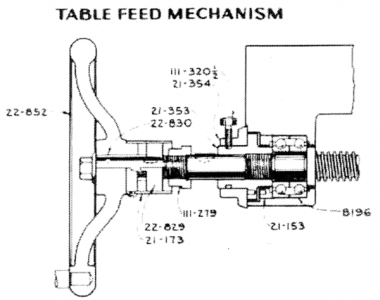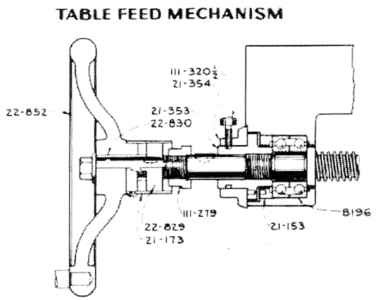Evan,
If the bearings seem to run OK and there's no end-play, I would leave it alone.
There are two threaded collars with holes for a face spanner. The outer one (21-353) is flush with the left end of the table casting and bears on the inner race. The inner collar (21-153) is recessed into the casting and retains the outer race. The bolt circle of the pins on the two collars are different, so you may wind up making two tools.

I've only taken one of these apart and the outer collar didn't put up much of a fight. A standard two-pin face spanner was all that was needed and we just held onto the leadscrew with a gloved hand. If you need to keep the leadscrew from turning, put the left handle, dog clutch (22-829) and nut (111-219) back on and use the handle for leverage; put something through the handle's spokes if necessary.
You will need to make a 3-pin spanner for the inner collar. I tried to make one from axe's pin circle and it didn't quite fit (but was close enough). In would recommend making the blank for the tool and using
blind hole transfer punches to mark the pins locations on the blank. Make the ID of the blank a close fit to the leadscrew shaft (7/8”) and the OD just small enough to enter the casting (2-1/4”). Put the transfer punches in the holes in the collar, slide the blank on and give it a few taps to mark the pin locations. Put witness marks on the casting and tool blank so you can put it back in the same way. The holes in the collar are 3/16”, but you should probably make the pins a bit undersize.
In our case, the inner collar didn’t put up much of a fight. The holes in the collar were badly deformed, so I used a 3/16” drill to clean up the holes. (Because of clearance issues, I used a hex-shank drill with and a socket wrench to turn it.) We used a Husky brand strap wrench from Home Depot to turn the tool and the collar came loose without too much force.
Cal



